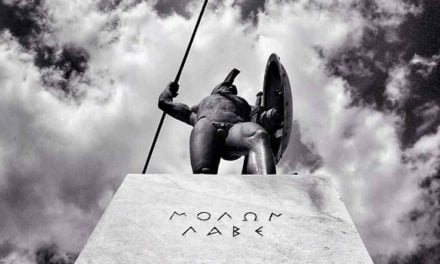The story of this classic puzzle goes like this:
The Story
Three friends decide to share a hotel room that costs $30. Each friend contributes $10, handing $30 to the hotel clerk. Later, the hotel clerk realizes that there was a special discount for the room, and it should only have cost $25. The hotel clerk gives $5 to the bellboy and asks him to return it to the friends. The bellboy, however, decides to keep $2 for himself and gives $1 back to each of the three friends.
Now, if we add up what each friend paid and what the bellboy kept, it seems like there’s a missing dollar:
- Each friend paid $9: $10 originally, minus the dollar they got back from the bellboy. We have a total of of 3 friends X $9 = $27.
- The bellboy kept $2.
When we add the $27 paid by the friends and the $2 kept by the bellboy, we get $29. Where is the missing dollar from the original $30?
Mainstream answer
Several responses are in circulation, and all the ones I encountered follow a similar pattern: The puzzle’s deliberate complexity is intended to craft the illusion of a missing dollar, and the concept of the “missing dollar” serves as a mere distraction meant to confuse, a red herring.
All such answers claim that in reality, there is no missing dollar. And that the correct way to account for the money is to look at what each friend ended-up paying, which sums to $27. Hotel keeps $25, and the bellboy keeps $2. Total of $27. No missing dollar.
Alternatively, other solutions claim we should look at the original $30: Hotel keeps $25, bellboy keeps $2, and a total of $3 are distributed equally back to the three friends. Total of $30. Again, there is no missing dollar.
One thing I agree with: There is no missing dollar.
Yet again, read “The Story” above one more time, and you will end-up scratching your head!
The real answer
This is not a mathematical puzzle. All mathematics are inside the “Mainstream answer” above. There is no other math here.
The intriguing aspect to consider is why presenting the puzzle in the manner of “The Story” mentioned above leads the reader to ponder the existence of a missing dollar, while examining the puzzle mathematically, as in the “Mainstream answer” provided above, unequivocally demonstrates that there is no missing dollar?
What is really happening here?
Let’s examine the “Mainstream answer”, that appears to solve the puzzle. Careful inspection reveals that we are studying the puzzle from two different perspectives. “The Past” and “The Present”.
In the Past, we had $30 ($10 from each friend), which the Mainstream answer accounts for, with no missing dollar.
In the Present, we are only looking to find $27, because essentially each friend payed $9 (not $10), to a total of $27. Once more, the Mainstream response accurately calculates the entire sum of $27, leaving no room for a missing dollar.
Two distinct sets of data exist, with one pertaining to the past and the other to the present.
Mixing past and present events in the same statement can lead to errors in reasoning or fallacies, particularly when the timeline is not appropriately considered or when causation is wrongly attributed. For example, assuming that past events are the direct cause of present circumstances without sufficient evidence, or overlooking intervening factors, can result in fallacious reasoning. It’s essential to be aware of the logical fallacies that can arise when analyzing events that span different time periods and to carefully consider the causal relationships between them.
In our Story, we simply do not have $30 during the second set of data. We only have $27. $25 is with the hotel, and $2 with the bellboy. The fallacy of logic occurs when we wrongly assume that the event of the past ($30) has a direct cause of present circumstance ($27). The fact that it doesn’t is exactly what is causing the confusion. Mathematicians call it “division by zero”. It is simply not possible.
Implications
On numerous occasions, I’ve witnessed people succumbing to this pitfall. Even I, despite being aware of the fallacy, sometimes find myself needing to reconsider before accepting a statement. For example, politicians claim “I’ve accomplished various tasks in my previous term, hence I can replicate those achievements now.” However, we must recognize that the circumstances have changed, involving two distinct sets of data. They conveniently “borrow” facts from the past, and use them in the present. There is a missing dollar! A fallacy of logic.
I find that the most prevalent occurrence of the “missing dollar” phenomenon is witnessing individuals lamenting their past actions, often acknowledging, “I should have known better.” Our past deeds are confined to the past, where they were influenced by a completely distinct array of data, facts, stimuli, emotions, and external influences, in contrast to the current set of circumstances. Had we possessed the knowledge we have now, perhaps we would have done differently.
In conclusion
Matters from bygone times ought to remain confined to their historical context. It goes without saying that they should be subject to analysis and serve as lessons. If necessary, we can pursue solutions for unresolved matters, yet we must rely on contemporary data, current circumstances, and updated knowledge in this endeavor. Most importantly, the wisdom and insights acquired from a thorough examination of the past can be invaluable in averting similar actions in the present.
We are unable to alter the past. Perhaps most importantly, we simply cannot employ data sets that emerged after the fact to condemn or critisize our past actions. Such an attempt would lead to a fallacy of logic, much like the illusion of “the missing dollar”.
To me, it seems that rather than tyring to change the past, taking responsibility for our past actions and acknowledging that “we now know better” is the most constructive course of action as we strive to move forward.


















RECENT COMMENTS